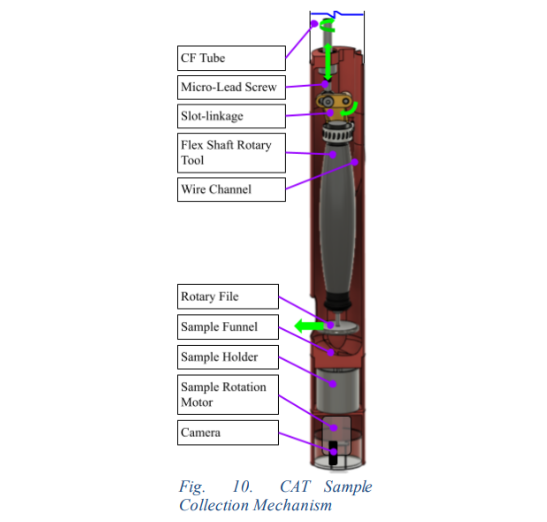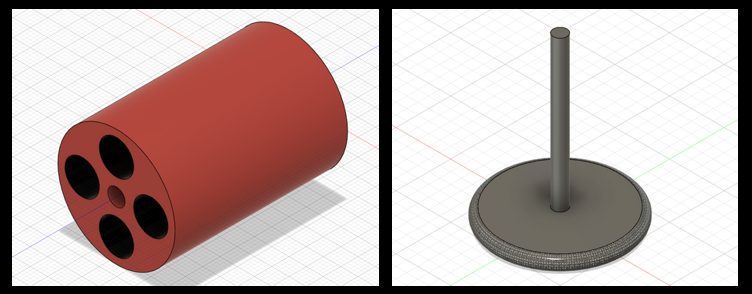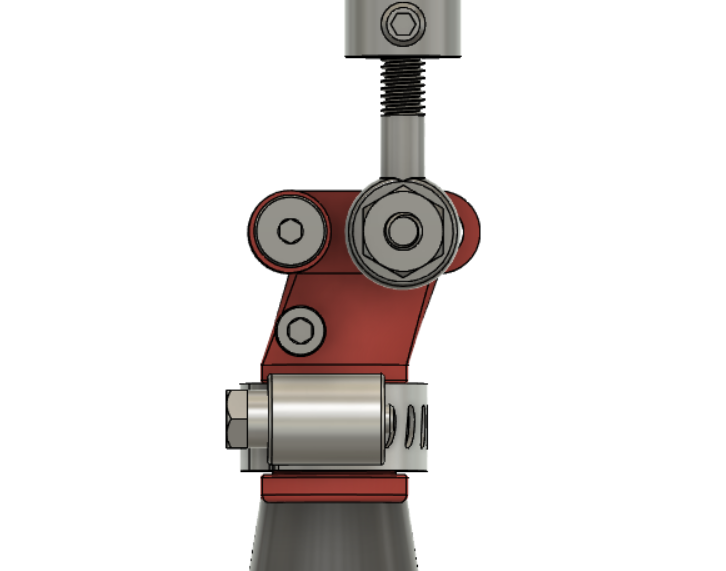Constraints:
To Fit everything in a carbon fiber tube
Challenges:
CAD ideation through assembly
CAT Design Flow
Core Analysis Tool
January 2021 - December 2021
The Idea:
This extra subsystem came about after the idea for a carousel system. We noticed that with the drilling, melting, and extracting/filtrating subsystems, there was a quarter of the carousel left that was empty. Thus CAT was born:

"The Core Analysis Tool (Fig. 10) takes advantage of the unique opportunity to access exposed Martian and Lunar subsurface layers to collect physical samples for research purposes beyond digital core synthesis. CAT is mounted to a lead screw and linear rail on the carousel 180° offset from MELT, allowing it to collect samples while MELT is being used in a different hole."
(PARSEC Technical Paper)
Making the Assembly
Through multiple brainstorming sessions, involving both CAD and hand-drawn sketches, the idea seen in Figure 10 eventually came about.
The main idea came to be: The dremel actuates outside of the tube it resides in such that the drill bit can shave off the walls of a certain layer in the pre-drilled hole. Loose regolith then falls into the funnel that leads into a slot in the sample revolver. This is then repeated for different layers such that different materials can be analyzed once the system is returned to scientists.
Below is some of the CAD I made for our assembly brainstorming:
CAD: Dremel

CAD: Sample Holder V1 + Drill Bit

After we got the main components for our idea, we had to figure out how the dremel was going to actuate given the restricted space inside the carbon-fiber tube. Through group discussions and various assemblies, we decided upon:
Actuation Motion

"The shaft drives an eye bolt micro-lead screw, which causes a slot linkage to rotate. This slot linkage is coupled to the end of the flex shaft, allowing the rotary file to articulate. When articulated, this file carves away layers of regolith that are directed by a funnel into a sample holder for retrieval. The sample holder is then rotated by a stepper motor to align four different collection chambers with the funnel."
(PARSEC Technical Paper)
Conclusions
Ultimately, our team was able to fully render CAD and diagrams for our proof of concept. For the competition, the subsystem was also physically made and able to articulate. Although it was not fully functional in its proposed sample collecting abilities, it served its purpose in proposing this idea of a subsystem that went beyond competition guidelines.



